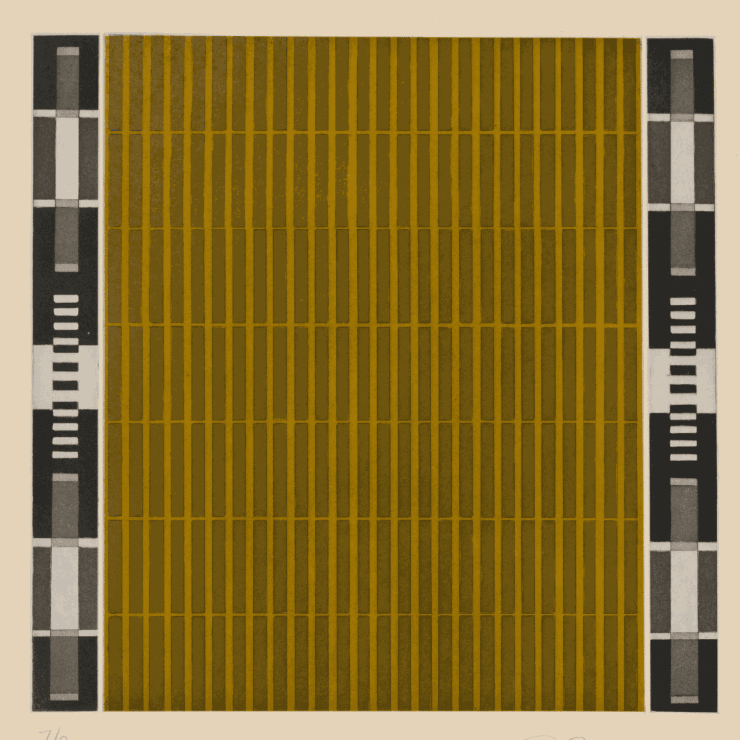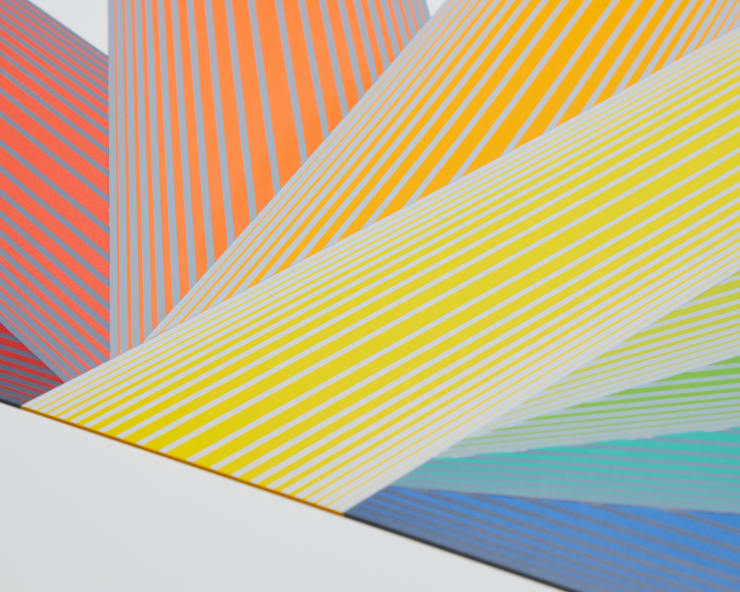Ellsworth Kelly
Ellsworth Kelly (1923-2015, New York) was a visionary painter, sculptor, and printmaker who led the Hard-edge painting and Minimalism movements. The artist first rose to critical acclaim in the 1950s with his bright, multi-paneled, largely monochromatic canvases. Maintaining a persistent focus on the dynamic relationships between shape, form and color, Kelly was one of the first artists to work with irregularly-shaped canvases. His subsequent layered reliefs, flat sculptures and line drawings further challenge viewers' conceptions of space.
In 2015 the Blanton Museum of Art in Austin, Texas accepted a design for a freestanding stone building with colored glass windows and interior features designed by Kelly. The structure, named Austin, was constructed posthumously and opened to the public in 2018. Described as a “secular chapel” by Jack Shear, Kelly’s partner of 30 years, the building is the only site-specific work by Kelly and builds upon the artist’s decades-long exploration of space and color.
Kelly received his formal art education at Pratt Institute, the School of the Museum of Fine Arts, Boston and the École nationale supérieure des Beaux-Arts in Paris. His career has been honored widely, including seven honorary degrees, the Praemium Imperiale, and the National Medal of Arts. His work is held in numerous public collections around the world, including the Centre Pompidou (Paris), Museo Nacional Centro de Arte Reina Sofia (Madrid), Tate Modern (London) and Whitney Museum of American Art (New York).
Related Works
- Swiss artist Olivier Mosset has developed a similar aesthetic of hard-edge forms and bright hues. View his work.
- Contemporary printmaker Matt Magee tells ZB, "I like Ellsworth Kelly's work, most specifically I respond to the drama and sharpness of his edges and how he uses space." Magee's forms are just as elegant and defined, and his palette posseses Kelly-esque vibrational energy. View his work.
-

Rereading Geometric Abstraction
31 Jan - 10 May 2025"Rereading Geometric Abstraction" is a showcase of prints from the Zane Bennett collection that can be broadly categorized as geometric abstraction.Read more -

Paper Trails
In collaboration with form & concept 27 Oct 2023 - 10 Feb 2024Paper Trails is a mixed media exhibition that draws compelling links between printmaking icons and contemporary sculptors. The show is a collaboration between Zane Bennett Contemporary Art and our sister...Read more -

Love of Prints
16 May - 20 Jun 2020Zane Bennett Contemporary Art takes a look at what makes a dynamic duo in The Love of Prints , our new online exhibition. As some couples in quarantine are getting...Read more -

Under the Influence
31 May - 13 Jul 2019“Prints are having a revival,” says curator Kylee Aragon. “And the conversation is shifting. It’s not just a piece of paper—it’s fine art.” This May, Zane Bennett presents Under the...Read more -

Master Prints of the '70s - '90s
27 Feb - 20 Mar 2015ZBCA will unveil for the first time our latest acquisitions, including works by Robert Rauschenberg, Roy Lichtenstein, Helen Frankenthaler, Jim Dine, Rufino Tamayo, Bernar Venet, and Robert Motherwell among others.Read more -

Contemporary Masters and Mosset
26 Aug - 23 Sep 2011A vibrant exhibition of prints celebrating the 20th century's greatest contemporary master artists including Jim Dine, Sam Francis, Helen Frankenthaler and Ellsworth Kelly among others. Also featured are prints and...Read more
-

Opening Reception: Rereading Geometric Abstraction
5 – 7 PM 31 Jan 2025Join us on January 31st from 5 to 7 PM for the opening reception of Rereading Geometric Abstraction, an exhibition of prints from the Zane Bennett collection that looks at how the formal elements of the movement have evolved.Read more -

Opening Reception: Paper Trails
5-7 pm 27 Oct 2023Join us to celebrate Paper Trails , a mixed media exhibition that draws compelling links between printmaking icons and contemporary sculptors. The show is a...Read more











